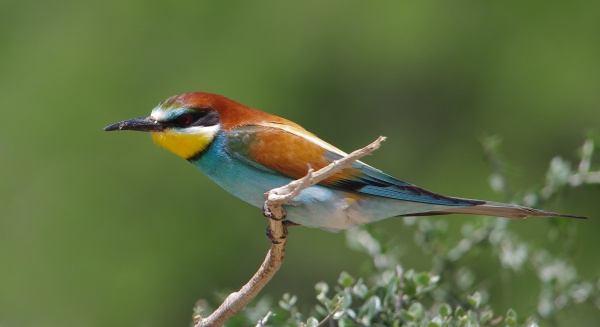Facts About European bee-eater
The European bee-eater, a strikingly colorful bird from the Meropidae family, is renowned for its migratory habits. This species breeds in southern Europe, parts of North Africa, and western Asia, and spends its winters in tropical Africa. It was first described by Carl Linnaeus in 1758 with the scientific name Merops apiaster.
European bee-eaters are social creatures, often nesting in colonies on sandy riverbanks. They excavate relatively long tunnels in which they lay spherical white eggs. Both male and female birds share the responsibility of incubating the eggs and caring for the young chicks. Observers can often hear their distinctive calls and witness their unique courtship behaviors.
Their diet primarily consists of flying insects such as bees, wasps, and hornets, which they capture mid-air from open perches. Before consuming bees, they skillfully remove the stingers. A single bee-eater can consume up to 250 bees a day, although their overall impact on bee populations is negligible. Interestingly, studies have shown that they gain weight more efficiently when their diet includes a mix of bees and dragonflies.
There have been several attempts by European bee-eaters to breed in the UK, with varying levels of success and public interest. These birds have attempted to nest in various locations, but some nests were unfortunately destroyed by predators like foxes or failed for other reasons. Research on their feeding habits has revealed that they do not specifically target beekeeping areas. Instead, they capture insects from pastures and meadows near their colonies. Contrary to popular belief, bee-eaters might not pose a significant threat to bee foraging. In some cases, their presence has even been associated with increased foraging rates among bees.

 Slovenia
Slovenia